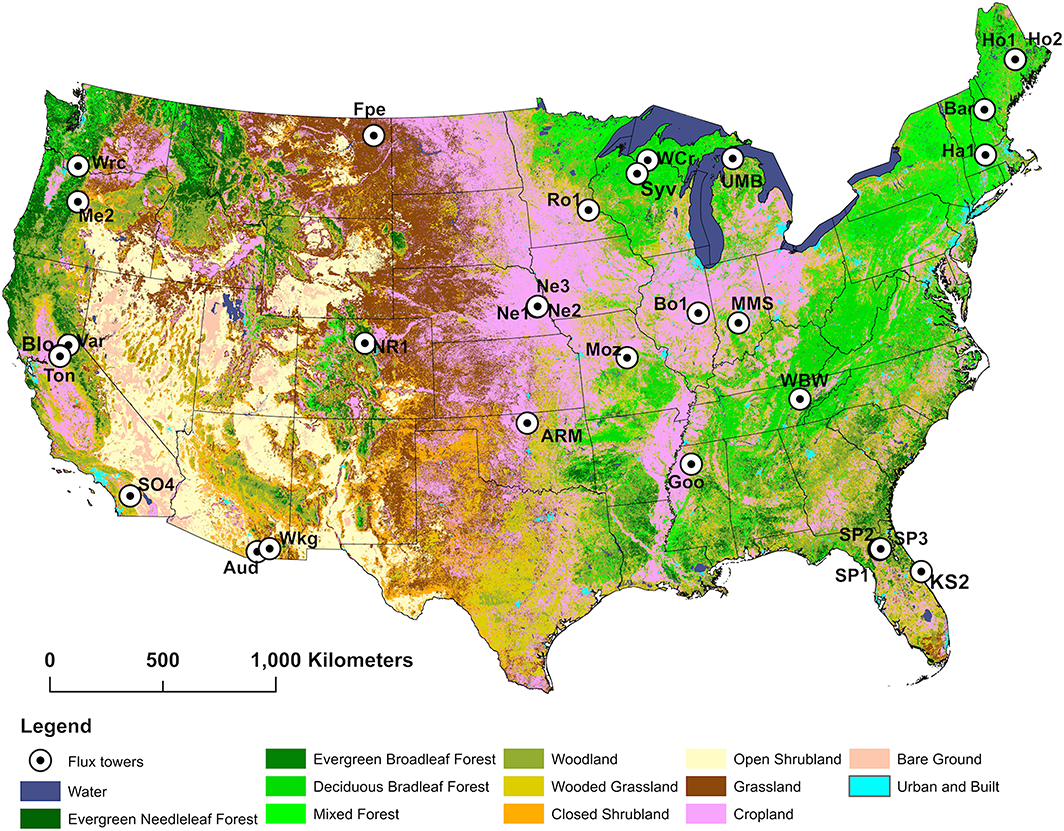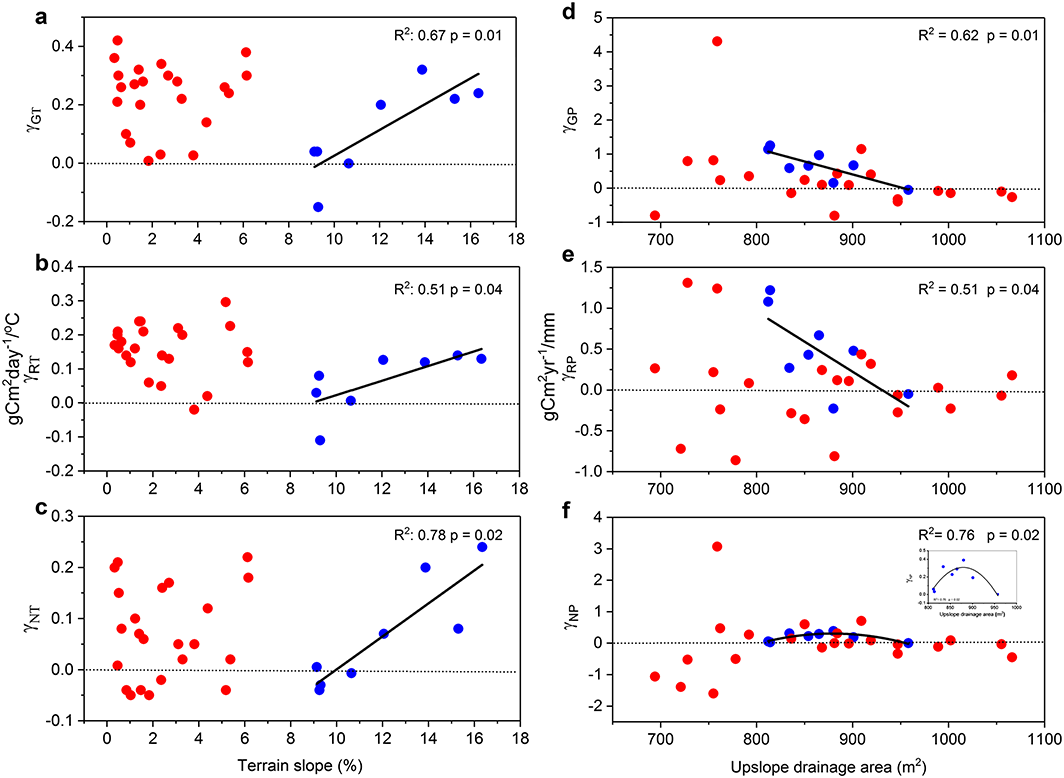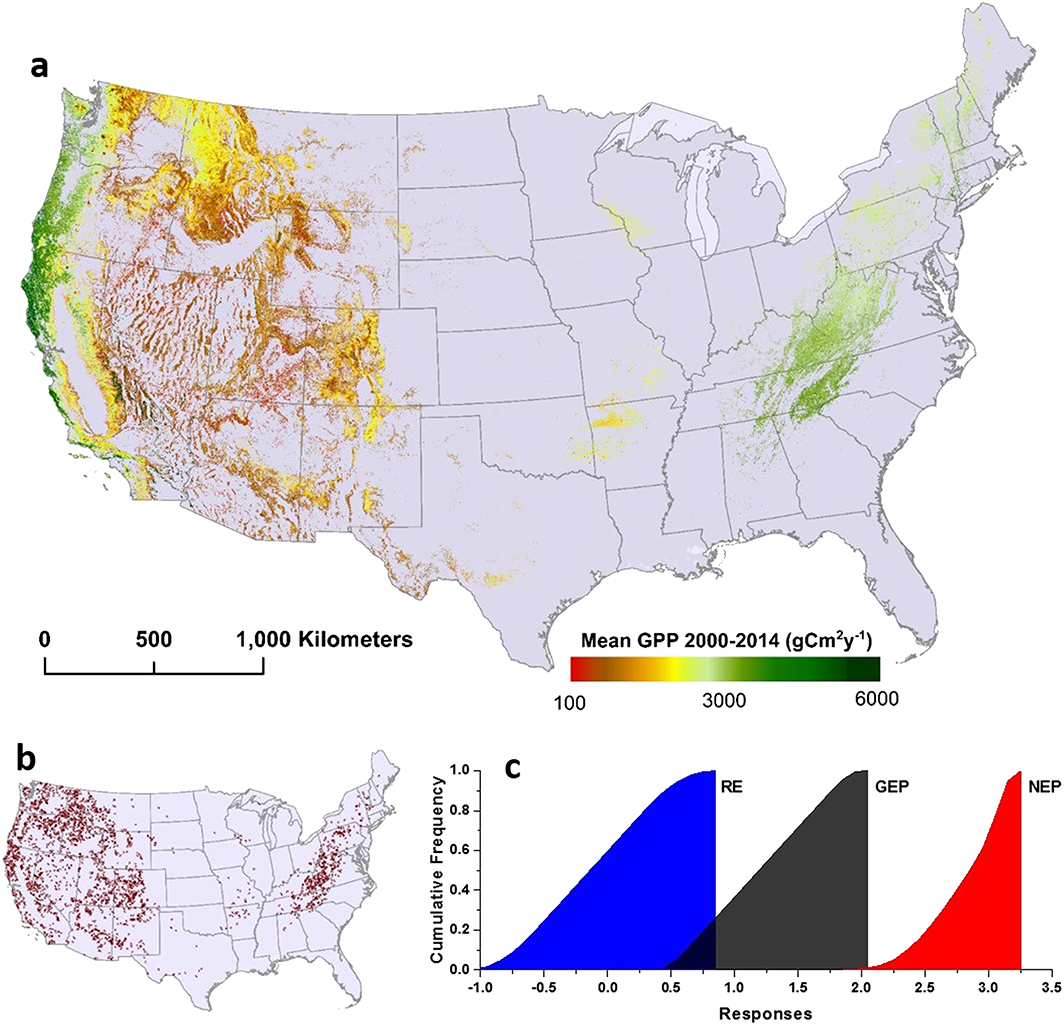Reyes, W. M., H. E. Epstein, X. Li, B. L. McGlynn, D. A. Riveros-Iregui, and R. E. Emanuel, 2017: Complex terrain influences ecosystem carbon responses to temperature and precipitation, Global Biogeochem. Cycles, 31, 1306–1317, doi:10.1002/2017GB005658.
Notes:
- How is a complex terrain defined?
- Probably is Slope > 8%. It looks right because of Fig.2.
- What variables are needed?
- NEP (Net Ecosystem Production)
- RE (Ecosystem Respiration)
- GEP (Gross Ecosystem Production)
Importance: Terrestrial ecosystem responses to temperature and precipitation have major implications for the global carbon cycle. Previous studies demonstrate that complex terrain, which accounts for more than 50% of Earth’s land surface, can affect ecological processes associated with land-atmosphere carbon fluxes.
Gaps: However, no studies have addressed the role of complex terrain in mediating ecophysiological responses of land-atmosphere carbon fluxes to climate variables.
What we did: We synthesized data from AmeriFlux towers and found that for sites in complex terrain, responses of ecosystem CO2 fluxes to temperature and precipitation are organized according to terrain slope and drainage area, variables associated with water and energy availability.
What we found: Specifically, we found that for tower sites in complex terrain, mean topographic slope and drainage area surrounding the tower explained between 51% and 78% of site-to-site variation in the response of CO2 fluxes to temperature and precipitation depending on the time scale. We found no such organization among sites in flat terrain, even though their flux responses exhibited similar ranges.
What these results mean: These results challenge prevailing conceptual framework in terrestrial ecosystem modeling that assumes that CO2 fluxes derive from vertical soil-plant-climate interactions. We conclude that the terrain in which ecosystems are situated can also have important influences on CO2 responses to temperature and precipitation. This work has implications for about 14% of the total land area of the conterminous U.S. This area is considered topographically complex and contributes to approximately 15% of gross ecosystem carbon production in the conterminous U.S.

Fig.1 Location of AmeriFlux tower sites used in this study with land cover shown in the background.

Fig.2 Relationships between responses of CO2 fluxes to climate variables and terrain metrics; the red symbols show sites in the flat terrain cluster, and the blue symbols show sites in the complex terrain cluster. Individual panels show (a–c) daily temperature responses and (d–f) annual precipitation responses. The dotted lines on panels indicate γ = 0, and the solid lines show significant linear regressions between terrain variables and responses for sites in complex terrain.

Fig.5 Complex terrain in the conterminous U.S. accounts for (a) 14% of the territory and (b) approximately 1.13 Gt of gross primary production per year, estimated from MODIS satellite observations [Zhao et al., 2005]. The red highlighting Figure 5b shows land area with the same range of terrain values identified in our study, 8 to 18% terrain slope and 800–1000 m2 drainage area, which constitutes about 2800 km2 of the conterminous U.S. (c) Cumulative frequency distributions of CO2 responses to annual precipitation (g C m−2 yr−1/mm) for complex terrain in the conterminous U.S. show the variability of these responses across the areas highlighted in Figure 5b. Sign of the RE response indicates potential limitations by diffusivity (negative values) and by water availability (positive values).